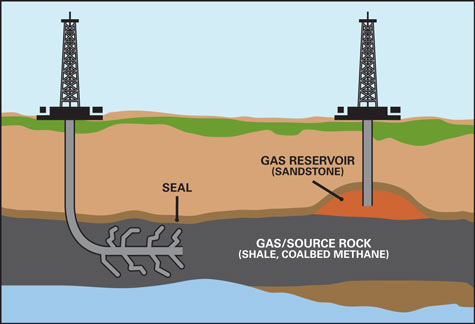I still don't think the EPA is much more than an ineffective lapdog for those companies with enough resources to staff the agency with their own former employees. Who with any sense really thinks that the EPA, and other similar government agencies, have the best interests of the People in mind before the profits of companies like Halliburton.

The largest domestic natural gas drilling boom in history has swept across the United States. The Halliburton-developed drilling technology of "fracking" or hydraulic fracturing has unlocked a "Saudia Arabia of natural gas" just beneath us. But is fracking safe? When filmmaker Josh Fox is asked to lease his land for drilling, he embarks on a cross-country odyssey uncovering a trail of secrets, lies and contamination. A recently drilled nearby Pennsylvania town reports that residents are able to light their drinking water on fire. This is just one of the many absurd and astonishing revelations of a new country called GASLAND. Part verite travelogue, part expose, part mystery, part bluegrass banjo meltdown, part showdown.
http://gaslandthemovie.com/

Since everyone wants to keep consuming energy at a massive rate (your recycling bin on the curb doesn't make up for this), we have to hope our country can create new legislation to make a difference. The Energy Policy Act of 2005 let large natural gas mining companies off the hook from polluting the air and water.
http://www.texastribune.org/texas-environmental-news/environmental-problems-and-policies/dish-mayor-states-air-monitor-gives-false-readings/

Natural gas mining companies like Encana are raping the land and destroying the ability to drink well water to such a devastating point that the water will never be drinkable in the lifetime of current or future residents. The industry lobbies heavily against any legislation that keeps them in check. Do your part, contact your representative and voice your opposition to this continued destruction. If allowed to continue, larger cities may be the next to fail to meet their water needs. Imagine the New York metro unable to provide drinkable water to it's residents...
http://www.americanprogress.org/issues/2010/04/fracking.html
https://secure.wikimedia.org/wikipedia/en/wiki/Hydraulic_fracturing
http://www.sourcewatch.org/index.php?title=Fracking
http://www.npr.org/templates/story/story.php?storyId=104565793